Abstract
An agglutinin test for the determination of antibody responses to Vibrio cholerae, requiring only 0.025 ml of serum, has been developed. This microtechnique permits the determination of agglutinin titres using fingertip blood, with results comparable with those obtained using venous blood taken at the same time.
Among 364 serum pairs in bacteriologically confirmed cases of cholera from an endemic area of East Pakistan, the second serum sample being obtained 6 days or more after the onset of symptoms, a fourfold rise in agglutinin titre occurred in 77.6% of children under 5 years and in 93.2% of persons 5 years of age or older. This titre rise was quite often demonstrated only against a bacterial suspension of the same serotype as the infecting organism. Among 198 serum pairs in bacteriologically negative cases, a fourfold titre rise against the Inaba suspension only was found in 1 case; 5 other persons with fourfold titre rises proved to be household contacts of cholera patients and are taken to represent bacteriological failures or responses to cholera vaccine rather than false positive serological responses.
Full text
PDF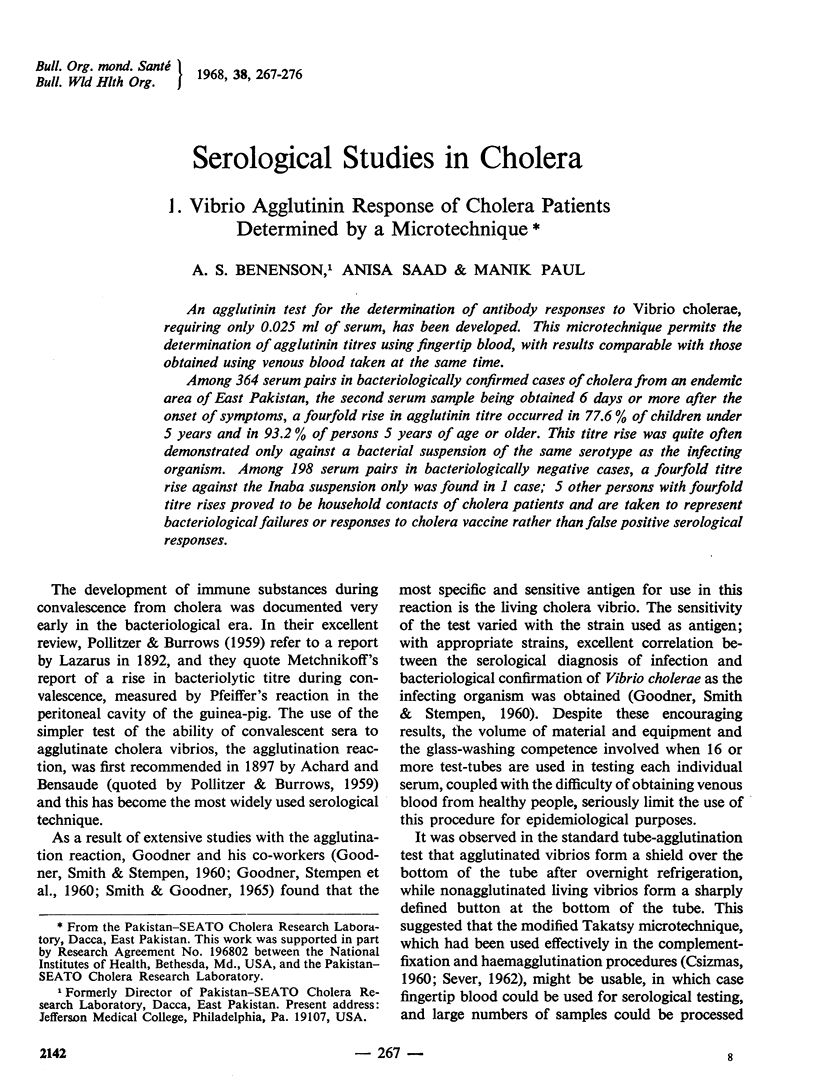
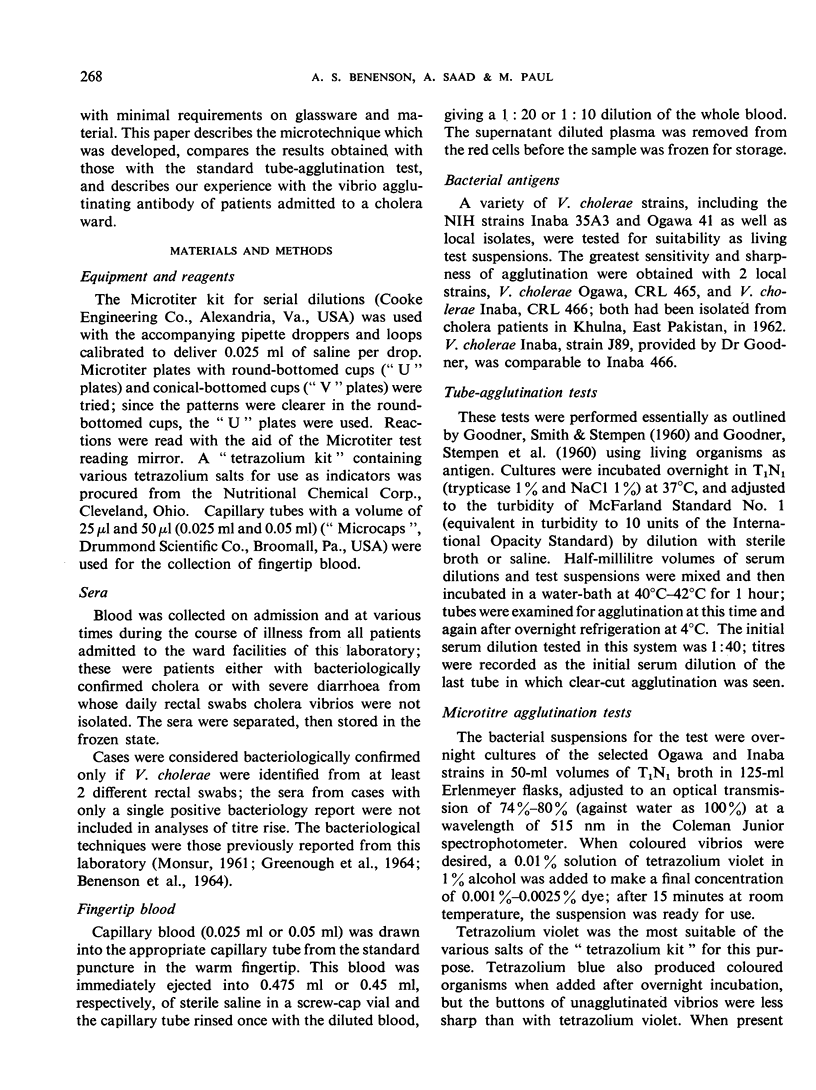
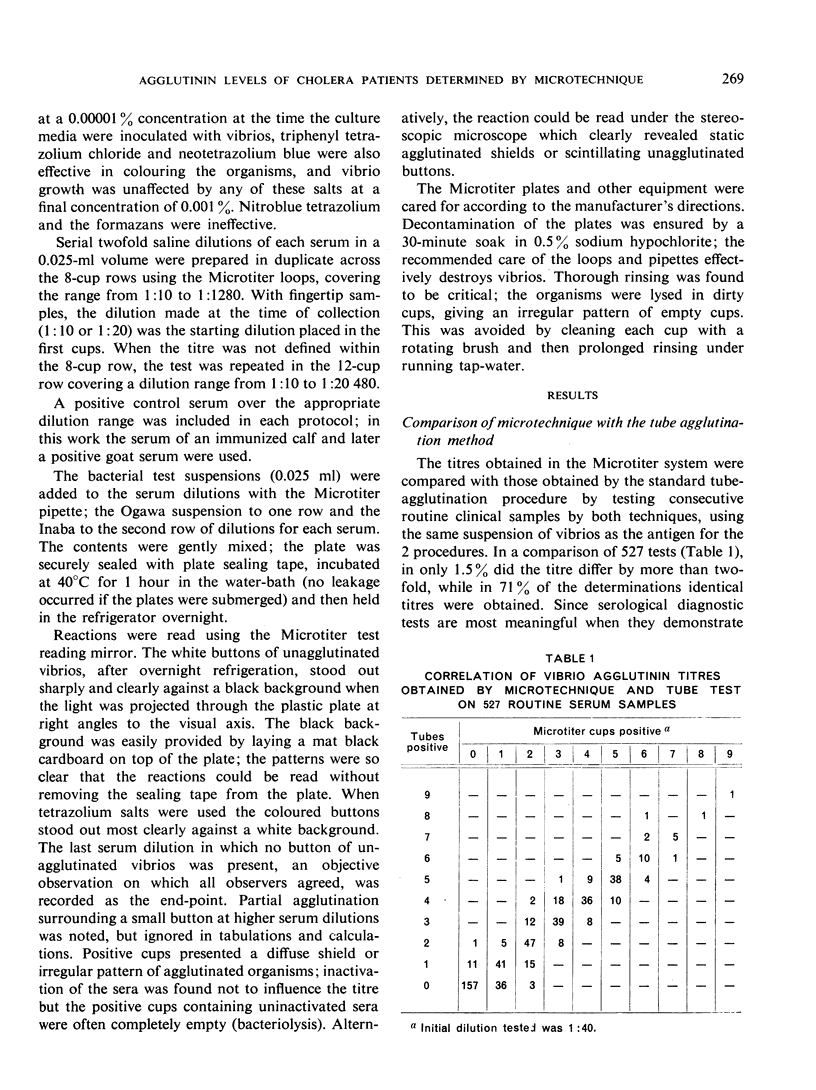
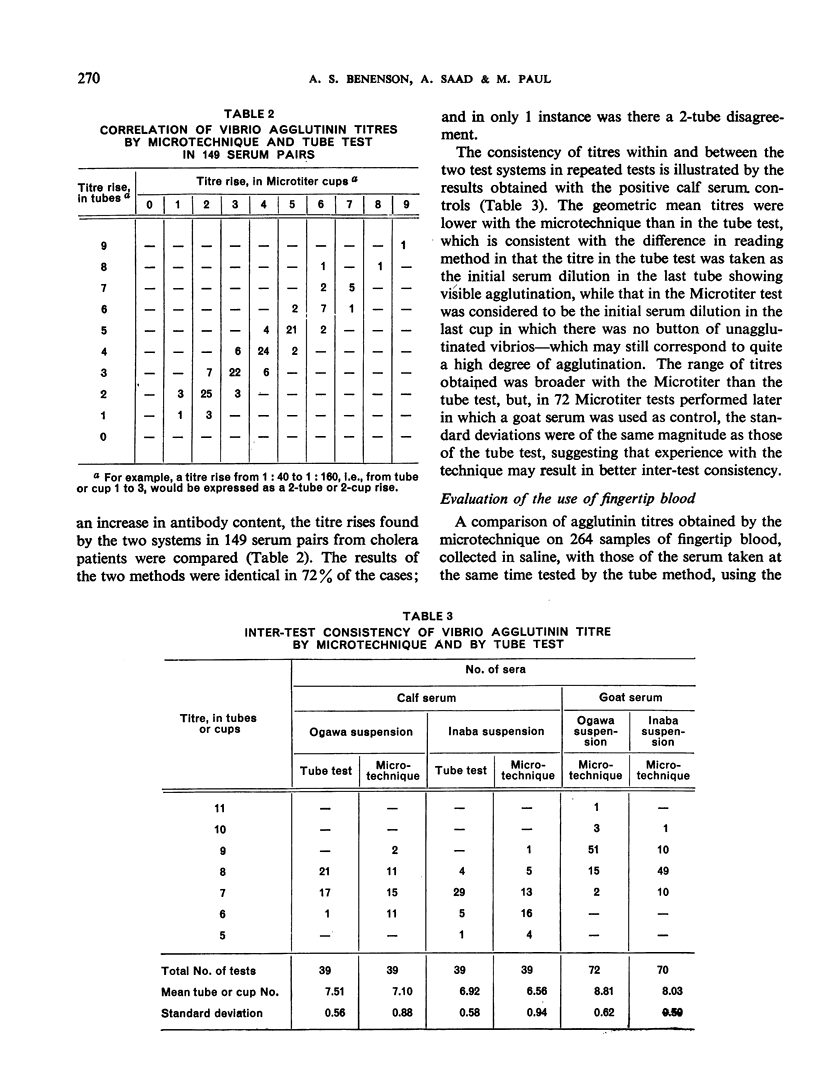
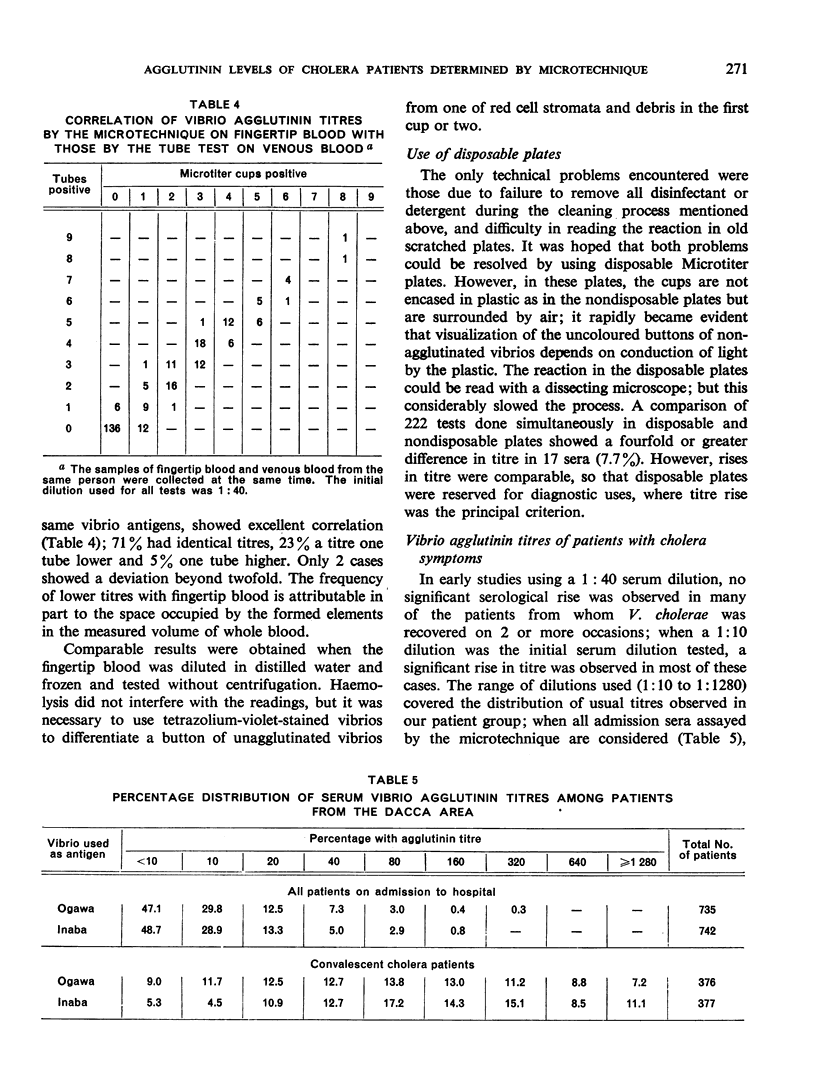
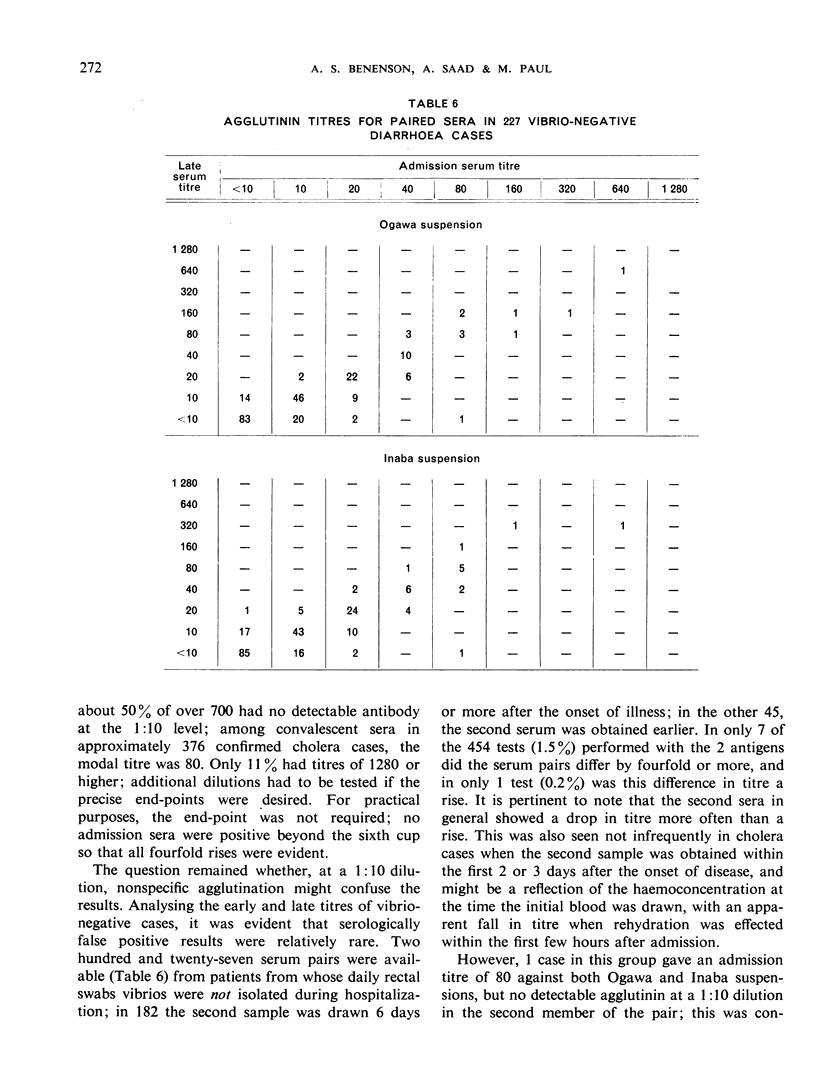
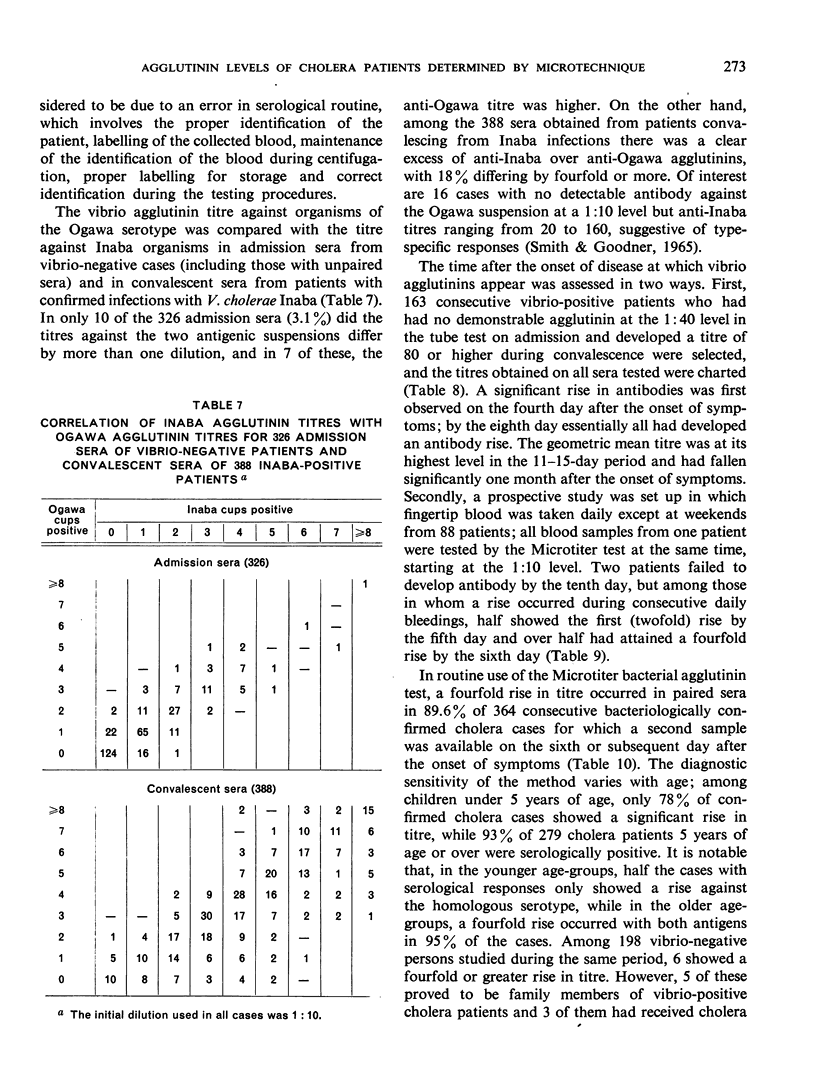
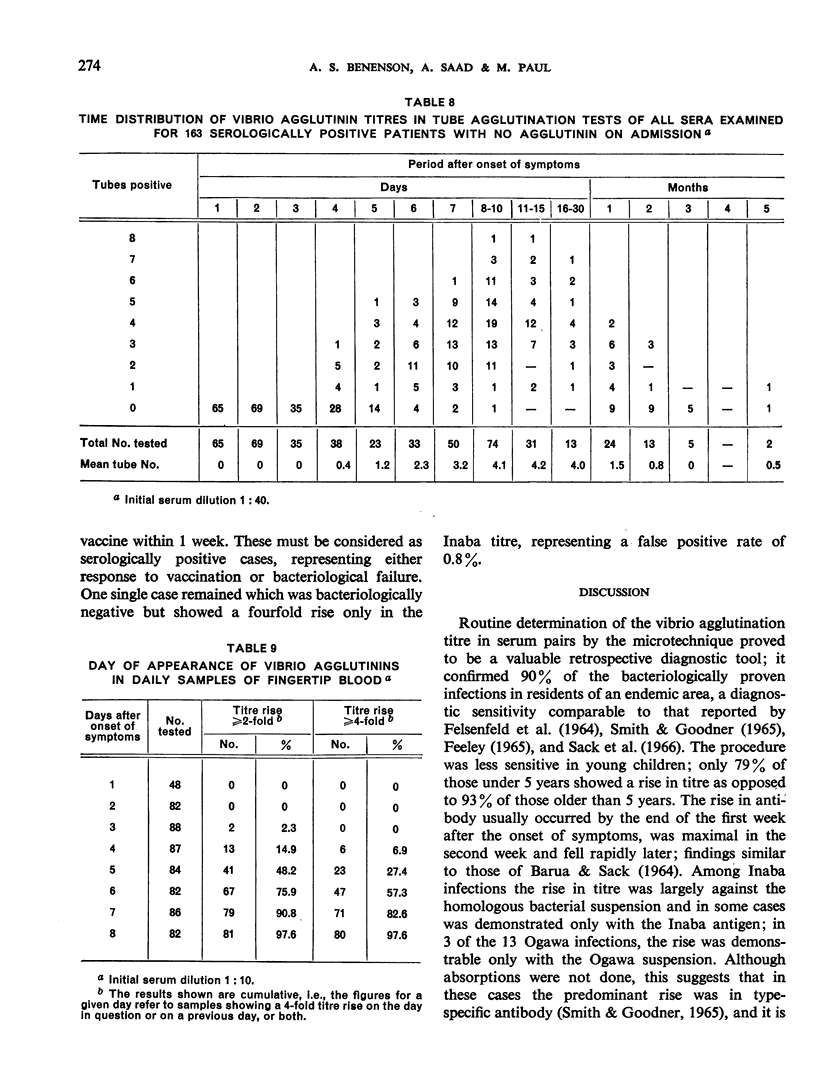
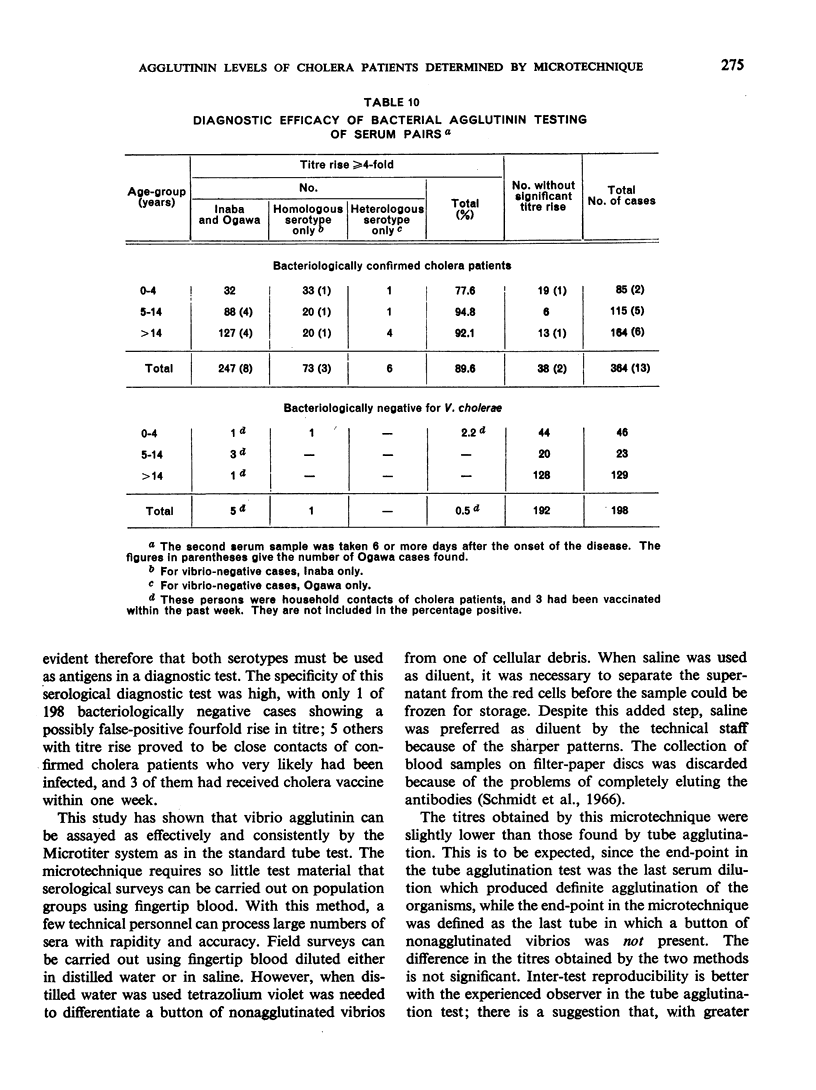
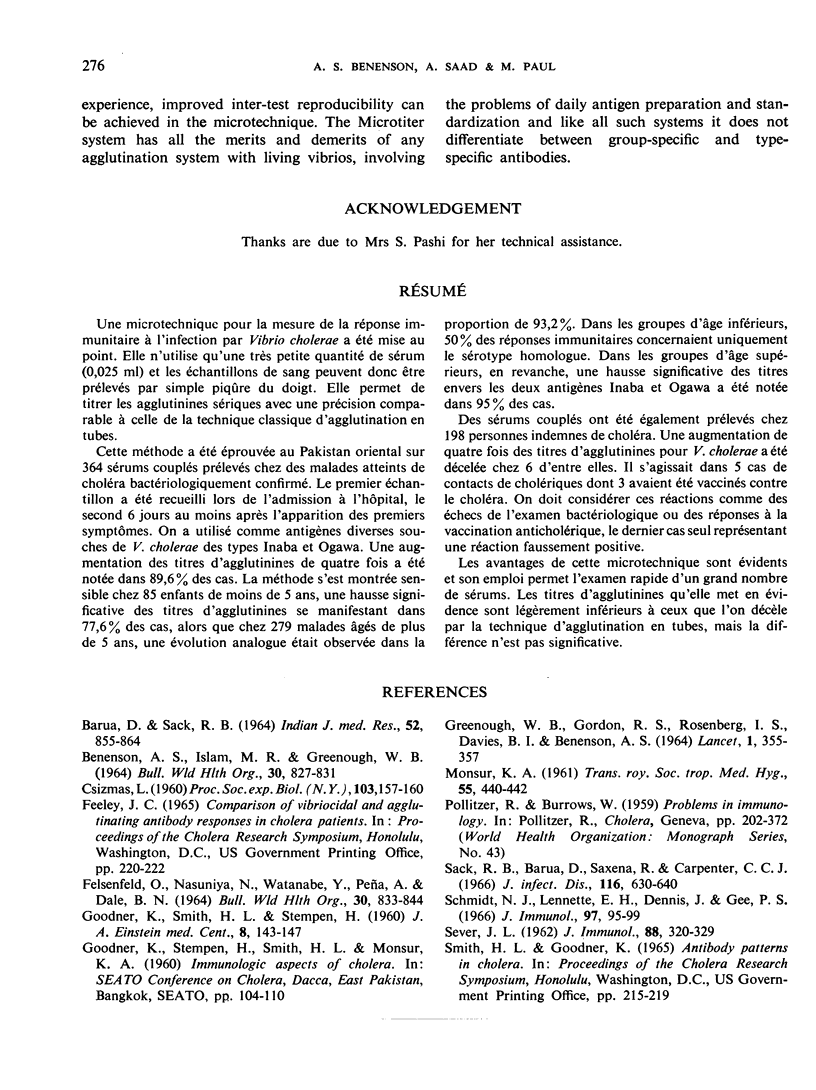
Selected References
These references are in PubMed. This may not be the complete list of references from this article.
- BENENSON A. S., ISLAM M. R., GREENOUGH W. B., 3rd RAPID IDENTIFICATION OF VIBRIO CHOLERAE BY DARKFIELD MICROSCOPY. Bull World Health Organ. 1964;30:827–831. [PMC free article] [PubMed] [Google Scholar]
- CSIZMAS L. Preparation of formalinized erythrocytes. Proc Soc Exp Biol Med. 1960 Jan;103:157–160. doi: 10.3181/00379727-103-25444. [DOI] [PubMed] [Google Scholar]
- FELSENFELD O., NASUNIYA N., WATANABE Y., PENA A., DALE B. N. AGGLUTINATING, LETHAL TOXIN AND E1 TOR HAEMOLYSIN NEUTRALIZING POTENCY OF SERA IN CHOLERA. Bull World Health Organ. 1964;30:833–844. [PMC free article] [PubMed] [Google Scholar]
- GOODNER K., SMITH H. L., Jr, STEMPEN H. Serologic diagnosis of cholera. J Albert Einstein Med Cent (Phila) 1960 Apr;8:143–147. [PubMed] [Google Scholar]
- GREENOUGH W. B., 3rd, GORDON R. S., Jr, ROSENBERG I. S., DAVIES B. I., BENENSON A. S. TETRACYCLINE IN THE TREATMENT OF CHOLERA. Lancet. 1964 Feb 15;1(7329):355–357. doi: 10.1016/s0140-6736(64)92099-9. [DOI] [PubMed] [Google Scholar]
- MONSUR K. A. A highly selective gelatin-taurocholate-tellurite medium for the isolation of Vibrio cholerae. Trans R Soc Trop Med Hyg. 1961 Sep;55:440–442. doi: 10.1016/0035-9203(61)90090-6. [DOI] [PubMed] [Google Scholar]
- SEVER J. L. Application of a microtechnique to viral serological investigations. J Immunol. 1962 Mar;88:320–329. [PubMed] [Google Scholar]
- Sack R. B., Barua D., Saxena R., Carpenter C. C. Vibriocidal and agglutinating antibody patterns in cholera patients. J Infect Dis. 1966 Dec;116(5):630–640. doi: 10.1093/infdis/116.5.630. [DOI] [PubMed] [Google Scholar]
- Schmidt N. J., Lennette E. H., Dennis J., Gee P. S. On the nature of complement-fixing antibodies to Mycoplasma pneumoniae. J Immunol. 1966 Jul;97(1):95–99. [PubMed] [Google Scholar]


